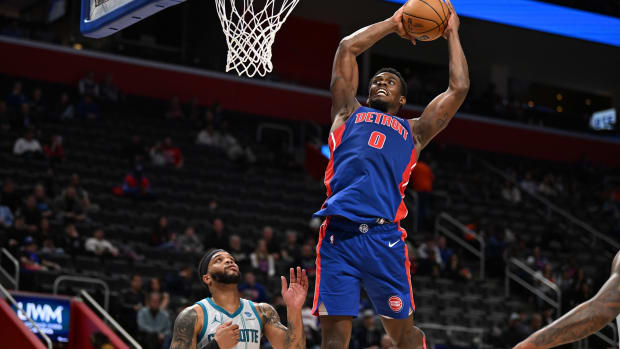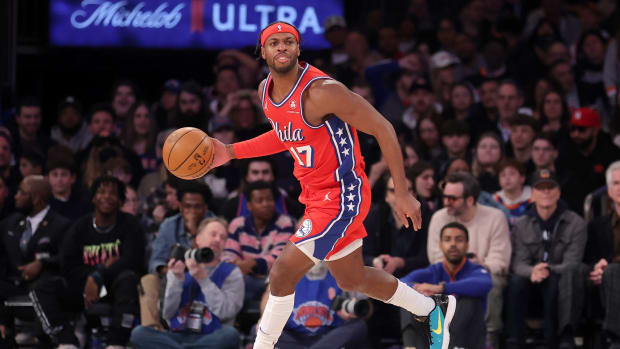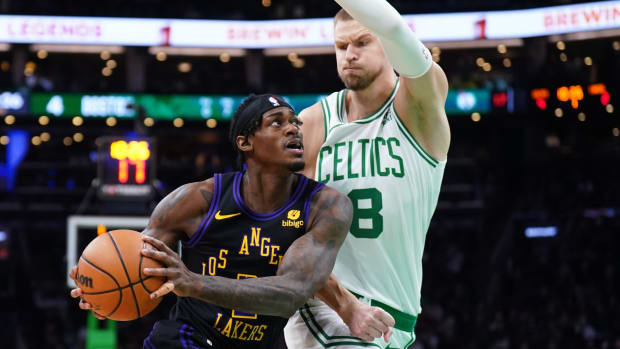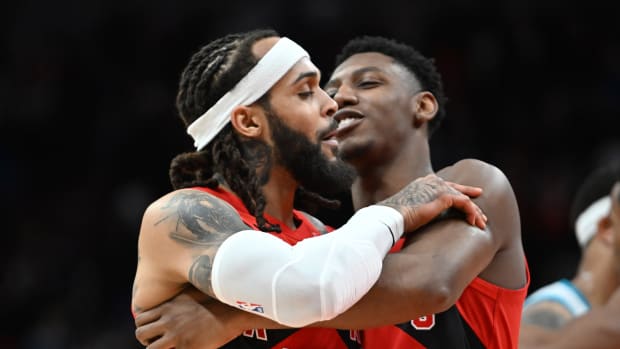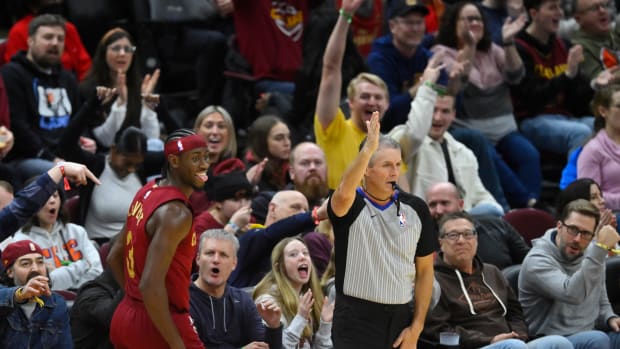Best Potential Playoff Matchups We Missed Out on in the 2000s
The NBA appears to be sticking with its standard conference seeding for the 2020 playoffs, a likely harbinger for the next decade despite the league’s consideration of an altered playoff format. And frankly, the decision not to shift the playoff format is a true shame.
We could have seen Boston and Philadelphia duel in the first round of the 2020 playoffs, while Miami could have faced Oklahoma City. A semifinal matchup between the Bucks and Clippers loomed, potentially setting the stage for the Battle of Los Angeles in the Finals. It’s surprising that Adam Silver and the league office would pass on such an opportunity, though there is likely a large contingent of owners east of the Mississippi against the idea.
The case for a 1-16 playoff format is even stronger when looking at the past two decades. The East has served as a junior varsity conference for much of the 21st century, and the conference-based seeding forced us to endure four straight years of Golden State vs. Cleveland in the Finals. Perhaps the Rockets, Thunder or Pacers would have won a championship in the last decade had the playoffs been seeded 1-16.
With that in mind, we at The Crossover took a look in the rearview mirror, re-seeding each of the last 20 playoffs in order to find the most enticing postseason matchups we never got to see. From CP3 vs. LeBron to Steph vs. Carmelo, a 1-16 playoff format could have provided some of the greatest battles of the last two decades. Let’s dive right into the altered history, looking back at what could have been if the NBA opted to embrace its creativity.
2014 – Clippers (No. 3) vs. Heat (No. 6)
The Warriors' dominance to close the decade has buried the Clippers’ standing as a top team of the 2010s, a decade that featured five straight seasons of 50-plus wins. And 2013-14 marked perhaps Los Angeles’ best shot at the Finals. The Clippers won 57 games in the regular season with the NBA’s No. 1 offense, and each member of their Big 3 was at least within the window of their relative prime. A Western Conference semifinals loss to the Thunder says more about Oklahoma City’s talent than that of Los Angeles.
It’s hard to give the Clippers the upper hand against the Heat at first glance. Miami reached its fourth straight Finals in 2014, and LeBron James posted the best effective field goal percentage of his career while spending most of the regular season on cruise control. But peer closer and perhaps Los Angeles would have had an advantage. Miami was on its last legs by the 2014 Finals, and its depth had been zapped—keeping the team together had become increasingly expensive. Dwyane Wade averaged under 18 points per game in the playoffs. Both Mario Chalmers and Norris Cole had a disappointing postseason splitting point-guard duties. James would have had to spend most of the series containing Paul, and Miami didn’t possess the frontcourt talent to keep both of the Clippers’ elite lob threats in check. It’s a shame we’ve never seen CP3 advance to the Finals. The 2014 playoffs remain a serious missed opportunity.
2013 – Knicks (No. 7) vs. Warriors (No. 10)
We didn’t quite know it at the time, but a Knicks vs. Warriors matchup would have captured two career arcs at opposite ends of the spectrum. The 2012-13 season marked the last good year of the Carmelo Anthony era in New York, a season in which the Knicks gunned their way to the NBA’s No. 3 offense as they led the league in made and attempted threes. Golden State, meanwhile, reached the playoffs for the first time in five years, beginning its ascent as a Western Conference power. The juxtaposition makes for a thrilling matchup.
Steph Curry had to wait one more season to reach his first All-Star Game, though 2012-13 was his true coming-out party. He saw a significant bump in minutes and scoring compared to his first three seasons, showing off his otherworldly range at a 45.3% clip from three. Yet despite Curry’s brilliance, the Warriors would have likely fallen short against New York. Tyson Chandler remained an elite interior defender, and he would have feasted against an undersized Golden State front line. Jason Kidd was still an impact offensive general and floor spacer in his final season, and most importantly, Anthony, who won the scoring title, was at his offensive peak. The following seasons skew our perceptions as the Warriors formed a dynasty and New York became a disaster. But the Knicks weren’t paper tigers in 2012-13. They defeated Boston in the first round, and very well could have beat the Pacers in the Eastern semifinals if not for Roy Hibbert’s verticality. Curry and Co. would have had a tough time advancing at MSG.
2009 – Magic (No. 4) vs. Nuggets (No. 5)
The final decade of Carmelo Anthony’s career has overshadowed his dominant years in Denver, a sad fact considering the Nuggets’ seven straight playoff appearances with Anthony after a decade of ineptitude. The Syracuse product nearly led Denver to the Finals in 2009, battling Kobe Bryant and the Lakers in a six-game series in the Western Conference finals. Paired with veteran Chauncey Billups, Denver outplayed its talent and won 54 games, forming a cohesive unit with a collection of cast-offs. George Karl got the best out of Kenyon Martin, J.R. Smith and Chris Andersen as Nenê manned the middle. In an era before the league’s talent truly ascended, Denver stood as a legitimate title contender.
Orlando stood as a bit of a parallel to the Nuggets in 2009. The Magic had a group of flawed All-NBA talent leading the way, and the supporting cast was better than the sum of its parts. Stan Van Gundy quietly launched the NBA’s three-point revolution, with Orlando standing as the only team aside from the Knicks to make over 800 threes. Both Rashard Lewis and Jameer Nelson made two-plus threes per game at 40% from deep, and Hedo Türkoğlu was also proficient from three. The details of the 2009 Finals have been largely forgotten. Perhaps Dwight Howard’s legacy is far different if Courtney Lee converts the game-winning layup in Game 2 vs. Los Angeles. Denver would have been a worthy opponent, but Orlando was deeper and offensively ahead of its time. The Magic would have had a slight edge in our hypothetical matchup.
2007 – Suns (No. 2) vs. Cavaliers (No. 7)
Another potential series involving LeBron James is perhaps the most interesting on our list. James carried an undermanned Cleveland squad to the Finals in 2007, only to be swept in a hurry by the Spurs machine. Would the Cavs have faced the same fate in a series against Phoenix? An uphill climb likely awaited.
The 2006-07 Suns were arguably the best Phoenix team of the Steve Nash era (though the 2004-05 squad has a solid case), and they could have defeated San Antonio in the second round if not for Robert Horry’s infamous hip check and the subsequent rash of suspensions. Steve Nash fell a mere decimal point short of the 50-40-90 club in 2006-07, while Amar'e Stoudemire neared his true prime. And this wasn’t solely an offensive machine. Shawn Marion and Raja Bell anchored the league’s No. 13 defense, while Leandro Barbosa served as a true pest. James steamrolled the Pistons en route to the Finals, so perhaps any non-Spurs squad would have fallen to The King in 2007. But with Nash and Stoudemire firing on all cylinders, it’s hard to envision LeBron overcoming his subpar supporting cast to get to his first championship.
2005 – Mavericks (No. 4) vs. Pistons (No. 5)
This series wouldn’t have been a ratings juggernaut, but the contrast in styles would have been truly fascinating. Dallas was the NBA’s No. 4 offense in 2004-05, highlighted by one of Dirk Nowitzki’s best offensive seasons. The Mavericks gave Nowitzki plenty of offensive help, stocking the roster with impactful scoring wings. Michael Finley and Jason Terry both shot over 40% from three. Josh Howard, Jerry Stackhouse and Keith Van Horn all averaged double figure points per game. Defenses had little answer as Dallas closed the regular season with 17 wins in its final 19 games.
Few teams could truly contain the Mavericks in 2004-05, but Detroit would have as good a shot as any in a seven-game series. Ben Wallace was the NBA’s Defensive Player of the Year, while Rasheed Wallace and Antonio McDyess provided additional rim protection. And Detroit’s defensive chops weren’t just in the paint. Tayshaun Prince could legitimately guard all five positions—imagine him as a modern 3-and-D wing—while Richard Hamilton and Lindsey Hunter were defensive assets in the backcourt. The Pistons very well could have gone back-to-back in '04 and '05. They'd get the slight nod over a stacked Dallas offense in a hypothetical matchup.
2004 – Timberwolves (No. 2) vs. Spurs (No. 3)
Tim Duncan stands a few levels above Kevin Garnett in the list of the greatest players of all time, but are we so sure that’s not due to their respective situations? Duncan benefitted from the most stable organization of the 21st century, armed with a Hall-of-Fame coach, two elite running mates and (later in his career) another Finals MVP. Garnett, meanwhile, toiled away in Minnesota throughout his prime, saddled with a subpar supporting cast. Garnett finally won a ring in Boston in '08, but had he spent his whole career with the likes of Paul Pierce and Ray Allen, perhaps he’d have numerous titles on his career resume.
Duncan and the Spurs eliminated the Timberwolves in the 2001 playoffs, though that Minnesota squad wasn’t quite ready to compete on the big stage. The '04 Timberwolves remain the best team in franchise history, marking the only year in which Minnesota advanced past the first round of the playoffs. Garnett and Co. won 58 games while finishing in the top six for both offensive and defensive rating, and they advanced to the Western Conference finals before losing to the Lakers in six games. This wasn’t the most talented squad in the West, though Sam Cassell turned in an All-Star season while Latrell Sprewell and Wally Szczerbiak provided quality scoring on the wing. Minnesota was more than a one-man band in 2004.
Could Minnesota truly have taken down the Spurs? Perhaps San Antonio was a bit more susceptible than one would assume. Duncan was the lone player to finish with over 15 points per game that year, and it was Manu Ginóbili's second season in the league. Yet when push comes to shove, it’s hard not to give Popovich’s squad the edge. The Spurs were flush with talent on the wing to contain Minnesota’s scoring punch, and Duncan was still in his peak. We would likely have seen a great duel between Duncan and Garnett. But betting against the Spurs in the 2000s was truly a foolish decision.
































